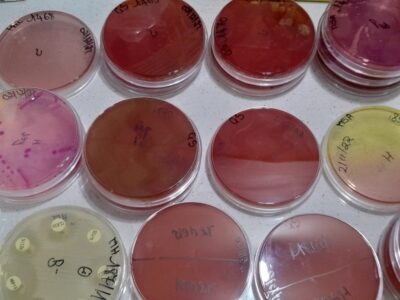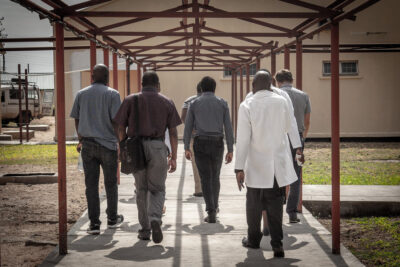Main content
According to the International Institute for Environment and Development, half the world’s populations live in urban areas of which a third, almost 1 billion, are desperately poor and live in slums without access to adequate water and sanitation. Additionally, as many as 150 million urban residents representing up to 50 per cent of the African urban population do not have adequate water supplies, while 180 million, or roughly 60 per cent of people in urban areas lack adequate sanitation. Kenya is a rapidly urbanizing country, with an estimated one-third of its population residing in cities and towns. While it is still amongst the least urbanized countries in the world, projections indicate that half of the population will be urban by 2030 (National Urban Development Policy, 2011). The urbanization process in Kenya has been accompanied by increasing levels of urban poverty, the growth of informal settlements, and rising inequalities between the rich and the poor. While reliable and current data on the size of the urban poor population is difficult to come by, it can be assumed that, with continued rapid urbanization, levels of urban poverty will continue to rise.
Kibera settlement
The Kibera settlement is the biggest slum in Africa and one of the biggest in the world. It houses almost half a million of these people and is characterized by high population density, unplanned and crowded settlement with inadequate and unreliable water supply, poor sanitation infrastructure and unsafe hygiene practices. Sanitation coverage is only 15% whereby one pit latrine is shared by approximately 200 people; these toilets are largely unclean, unaffordable, built of unsafe dilapidated materials, do not offer privacy to users, and most are located at distances considered unsafe to household users, particularly women and children. These factors render such toilets largely inaccessible leading to the use of “flying toilets” whereby fecal matter is deposited in polythene paper bags and flung under cover of darkness onto the rooftops of neighbouring households and into open alleys for disposal- which in effect compromises human dignity and health.



Sexual health
In Kibera slums, adolescent girls are prone to early unwanted pregnancies, septic abortions, sexual abuse, HIV and AIDS, alcohol and substance use and abuse and vulnerability to risks associated with early sexual activity. Adjusting to sexual development and protecting their reproductive health are major challenges for adolescents. They are also vulnerable because they lack knowledge and skills to avoid risky behaviour and lack access to acceptable, affordable and appropriate reproductive health information and services. This is often compounded with multi-pronged disadvantages such as poverty and unemployment. Adolescent girls face more challenges in terms of menstrual hygiene management because of lack of sanitary pads, awareness and proper sanitation facilities. This leads to girls missing school during their monthly periods, with negative implications on their education outcomes.
Integrated school health programme
An issue that is unique to urban areas is the high number of non-formal schools based primarily in the urban informal settlements like Kibera, characterized by poor physical facilities, a poor learning environment and with few qualified teachers. Data for Nairobi shows that around 25% of enrolment is in non-formal schools, demonstrating the significant contribution of these schools to providing education in the city. Evidence indicates that comprehensive and integrated school health programmes that focus on academic curriculum, the environment and community development, are more likely to improve the health of school children and the community at large. The existence of school health policy and guidelines, 2009, has helped reinforce the integrated school health in the country. A 3-year partnership focussing on promoting the role of children as agents of health behaviour change was initiated by the Government of Kenya, AMREF and the Kibera community, the Kibera Integrated School Health (KISH) project. The project site formed the Mashimoni and Laini Saba villages within the Kibera informal settlement, which included 38 non-formal and 2 public schools. The project goal was to improve the health of Kibera residents through an integrated school health programme. This was achieved by focussing on reduction of hygiene and sanitation related diseases, reduction of sexual reproductive health illness, improved nutrition status among pupils and within their community in the 40 intervention schools which were not the case in the comparison schools. WHO asserts that initiating water, sanitation and hygiene promotion activities in schools can have a positive impact on the ability of school-going children to learn and the behaviour learnt at school can lead to life-long positive habits. Children have also been found to influence the behaviour of family members and the community as a whole. It has also been noted that school hygiene and sanitation initiatives are more cost-effective when children play a central role. The evidence suggests that these interventions are most effective if they focus on capacity building, behaviour change, the institutionalization of the programme and establishment of partnerships.
Objective of the study
The objective of the study was to assess the effectiveness of children as health change agents in the improvement health status of communities living in urban informal settlements.
Methodology
A quasi-experimental study design was used with comparison being made between the intervention and non-intervention schools in Kibera. The specific aspects of the project that were focussed on for comparison were school attendance, access to water, personal hygiene, sanitation promotion, reproductive health and STIs and capacity building. Structured questionnaires were administered to 404 pupils in intervention schools and 202 pupils in non-intervention schools while key informant interviews were conducted with teachers, parents, project staff, project partners and local administration and focus group discussions conducted with the community members.
Key achievements
School attendance
The study revealed that absenteeism reduced to 25% from 33.9% during baseline compared to 29.5% in non-intervention sites. Performance and enrolments have shown an increasing trend in many of the schools. Study data indicates that there is increased enrolment of over 10% in sample intervention schools. These developments are an indication of existence of child friendly environments in the schools which enable learning.

Access to safe water
The percentage of pupils in intervention schools with access to safe drinking water increased to 68% from 50% at baseline compared to 39.3% of non-intervention schools. Water availability was also influenced by ability of schools to pay for water supply even when they have storage facilities. In addition 69.7% of intervention and 54.3% of comparison schools got water from water tanks installed within the school compounds. Piped water connected directly to the school compound in a tap was reported by 62.4% of intervention schools compared to a mere 9.5% reported by comparison schools.
Personal hygiene
Various critical hygienic behaviours were noted among pupils in intervention schools. The results showed a significant improvement on the knowledge of disease prevention. At baseline, 71.7% of pupils in control schools and 65% in intervention sites washed their hands after visiting the toilet. The end-term indicated commendable improvement with the intervention schools having higher respondents (93%) than control schools (81.3%) who washed their hands. 94% of the schools have hand-washing facilities compared with 48% in non-intervention schools, a statistically significant difference at p<0.05. Other appropriate behaviour changes adapted by pupils in intervention schools include regular trimming of nails of at least once every 2 weeks (81.2%) compared with control sites (56%). This is an important public health practice promoted among children towards prevention of various water and sanitation related diseases. Other personal hygiene practices that have greatly improved include dental health, minimizing risky behaviour and attitude related to waste disposal.
Sanitation promotion
Most intervention schools have improved toilets (83%) compared to the baseline of 58% while the comparison schools on the other hand mostly have ordinary pit latrines (66%). The uptake of improved sanitation facilities is evident in intervention schools and this could be attributed to project interventions as it has supported development of hygiene and sanitation facilities within intervention area.
Reproductive health and STIs
All respondents identified with reproductive health topics taught in school. However, more intervention schools are taught reproductive health than the comparison schools. The uptake of reproductive health activities is higher compared to the baseline findings which reported 59.5% uptake in schools. This could be attributed to integration of reproductive health (RH) activities into the Personal Hygiene and Sanitation Education (PHASE) activities. The teachers have thus taken the lead in ensuring streamlining of RH interventions within the schools.
Capacity building
During focus group discussion with focal teachers from schools and key informant interview with the chair of the PHASE/KISH Forum, it was confirmed that during the KISH project teachers were trained as trainers. The training content was expanded to include First Aid, sexual and reproductive health, children as change agents, child rights, hygiene and sanitation. Learning materials and training manuals – customized to local situations with which the children can easily identify – were provided to facilitate training. Focus group discussions (FGDs) with parents confirmed that they have been given orientation by teachers on being open and friendly to their daughters in discussing reproductive health issues. FGDs with community health workers and health workers at the Kibera health centre, indicated that this initiative contributed to enhancing staffing and drug availability, helped the health workers to better understand the integrated school health approach and the role of children as vehicles for conveying health messages to peers and parents.
Relevance of the intervention
The initiative is in line with current policies and strategies of the Ministries of Health and Education in Kenya. Specifically, the interventions closely link with the community health strategy and the school Water Sanitation and Hygiene (WASH) programme of the Ministry of Health. This ensures sustainability of the initiatives even after the project terminates. It addresses national as well as local level priorities. The WASH component contributes to the goals of the Nairobi Water and Sewerage Company as well as those of the school WASH programme of the Ministry of Health. The implementation was within the community health strategy. Further, it clearly complements the goals of the Community-led Total Sanitation programme of the Ministry of Health which are geared to ensuring understanding, acceptance and ownership by communities of their water and sanitation needs.
Through peer education, children have developed the courage and confidence to talk freely and even on matters of reproductive health which were previously avoided. Peer training has therefore helped in two ways: improving pupils’ awareness of health issues and increasing the assertiveness of pupils. (Headteacher, Kibera Soweto)
AMREF programme has helped us greatly in sanitation. Our waste disposal has improved greatly, our pit latrines have been upgraded into VIP, and pupils and teachers are dewormed regularly. One positive effect of the project is that it has helped learners and even teachers to discuss health concerns freely. (Soweto, primary school headteacher)
We received pads from AMREF and it has contributed to reduction of absenteeism among girls who could not afford sanitary pads. It also helped us identify the challenges that the girls go through during the menstrual periods and also helped in addressing adolescent issues. (Headteacher, Mbagathi Primary School)
Conclusion
The project demonstrated that children are effective change agents, not only for health promotion but also for continued attainment of child rights. Children have infinite capacity to influence positive health behaviours among their peers, parents and general community. School health clubs play a pivotal role in facilitating this as fora for children-moderated discourse on relevant health issues in their schools, reflecting on progress achieved and planning for continued awareness sessions. The school management committee (consisting of representatives of parents and teachers) is therefore obligated to provide requisite leadership at school level including availing resources, time and mentorship. However, sustainability in such initiatives can only be realized if a well-empowered civil group exists to create the required social capital particularly in the informal settlement. In this case, Kibera PHASE Forum is aptly playing this role. Ultimately though, the government has the overall responsibility to ensure populations residing in informal settlements have access to basic health care services. In this regard, such initiatives have to closely collaborate with existing government structures and systematically lobby for increased financial and human resource allocation and social welfare investments. This model certainly presents immense potential towards improving health outcomes in urban informal settlements through a cost-effective and sustainable manner.
For references please contact the author.





















































